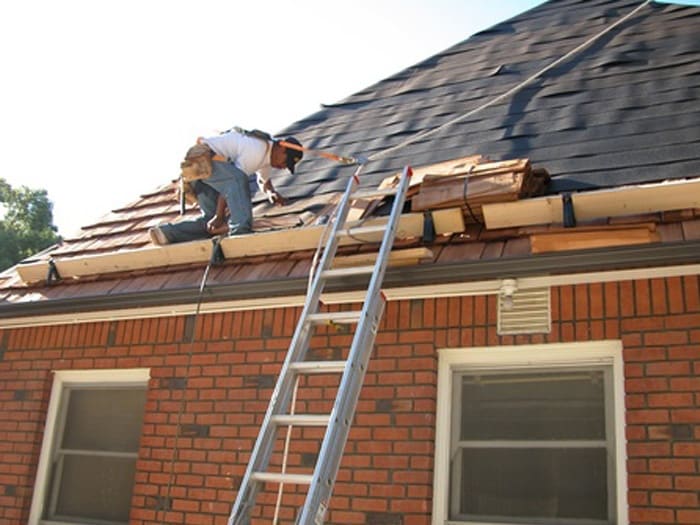History of Roofing Materials in St. Louis, Missouri
The outermost layer of a building’s roof is sometimes self-supporting but is usually supported by an underlying structure. The roofing material on a building protects it from the harsh environment!
Finding or making shelter was one of humanity’s initial talents, and the roof is the most critical component of any shelter. As humanity progressed, structures and roofs began to evolve as well.
Roofing has existed for at least as long as history has been chronicled, perhaps not longer. Thousands of years since humanity abandoned the hunter-gatherer lifestyle and settled down to establish towns and cities, a good roof has come long. Here’s a quick rundown of roofing’s history. Click here to learn more if you need a local roofing company.
History of Roofing Materials
You’ll find a wide variety of roofing materials today if you walk the aisles of a home improvement store, search the internet, or visit our roofing gallery. While asphalt shingles are popular in many areas, classically attractive ceramic tiles are becoming more commonly accessible and are a fantastic alternative for homes in the Southwest.
Metal roofs have been around for a long time and are lightweight, sturdy, and beautiful. They are still an inspiring option today, and their popularity is growing. Roofing has a long and fascinating history, contributing to our current range of roofing material options and styles.
Take a look at the timeline below to see how roofs have changed over time:
Earliest Roofing
Earlier the man slept under the stars or in a cave protected from the elements. They built their roofs out of various materials, including branches and leaves, forest floor trash, and animal hides. Palm fronds were a convenient choice in tropical areas, and they are still popular today.
Plains Indians built their tipis out of the skins of animals they hunted, such as buffalo and deer. Mud and straw roofs were also common in many parts of ancient Africa. Wood was also a possibility, but it was frequently used with other materials such as mud.
Tiled and Thatched Roofing
In terms of architectural innovation, the Chinese were ahead of the game. Clay tiles were used to construct roofs in about 3,000 BC China. However, China was famed for its excellent building techniques, and this form of roofing would not be seen in other regions of the world until much later. Northern Europeans favored slate or hardwood tiles, which were readily accessible.
Thatching first appeared in Europe around 735 AD and was the most popular roofing method until the nineteenth century. Thatching is a more complex method of making a roof out of straw, hay, reeds, or similar materials. It was popular because the heavy covering kept leaks while simultaneously acting as insulation, keeping the house warm.
Metal Roofing
For a good reason, metal roofing has been employed throughout history. Roofs made of metal were excessively expensive. As a result, they were primarily utilized by the wealthy or in major structures such as temples and museums.
The Ancient Egyptians utilized aluminum and alum compounds to reinforce their roofing. Zinc was first utilized in roofing in the 1700s and is still a preferred alternative to copper today. Copper is a favorite metal for roofing because of its ease of handling and the lovely way it matures.
Flat copper sheeting was first employed in Europe in the 1400s, especially on cathedrals. In 1801 near Boston, Paul Revere created the country’s first copper mill. His work was used on both sides of the Atlantic.
Fire Resistant Roofing
Extreme fires have ravaged our history as well. Many modern building rules involve fire safety because of the past tragic fires caused by poor planning. New roofing materials are fire-resistant and designed to withstand wildfires, fireworks, lightning strikes, and other ignition sources.
Thirteen thousand two hundred homes in London were destroyed before these fire-resistant materials were installed. While flammable roofing wasn’t the primary cause of the fire, it certainly didn’t help. As extreme fires become more common in California and worldwide, fire-resistant roofing is required.
Modern Roofing
Today’s roofing materials are still determined by local climate, material availability, and cultural preferences, but consumers have many options. For example, homeowners can select from hundreds of ceramic or concrete tiles. They can go for elegant slate roofing or a cost-effective and quick asphalt roof solution.
Metal roofing, such as copper and zinc, is adaptable, elegant, and long-lasting, as well as energy-efficient, lightweight, and recyclable, making it an excellent choice for today’s green building trend.
Conclusion
For as long as humans have been settling in one place, they have built a roof to live beneath. Roofing is an important part of our homes, and it has evolved and grown in response to our changing requirements. Roofing is safer and stronger than ever before, safeguarding the things we love and protecting lives!



